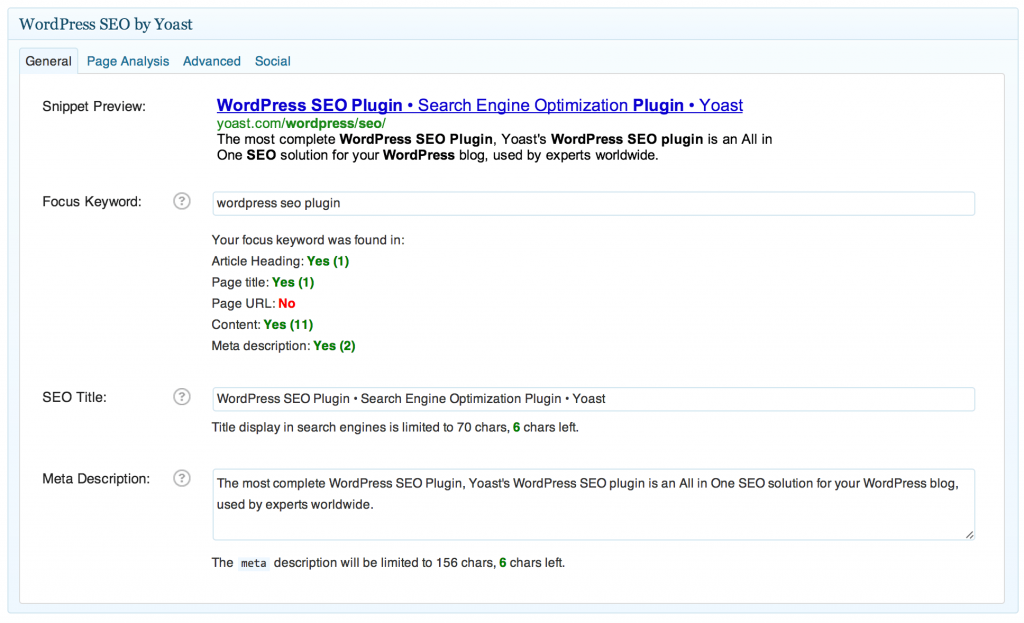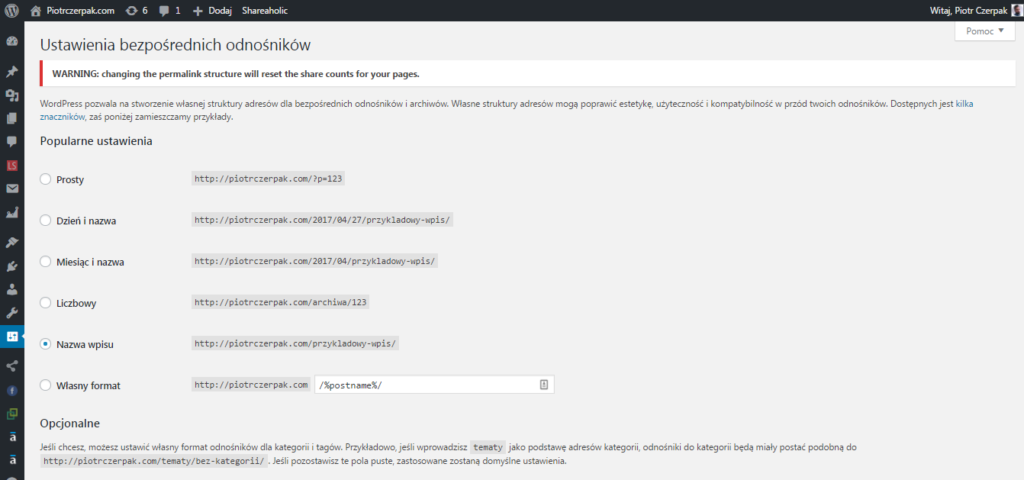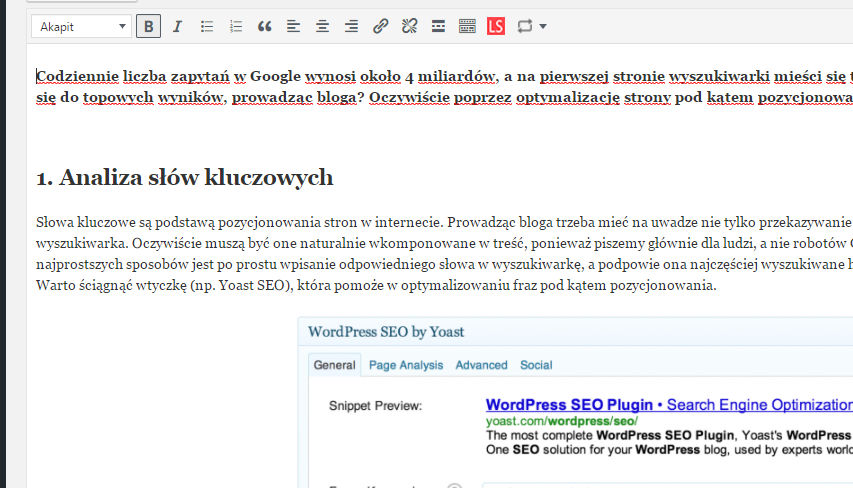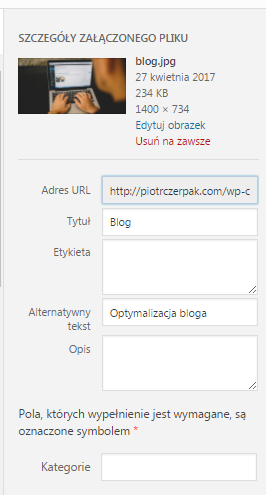There are about 4 billion google queries every day, and only 10 sites are on the first page of the search engine. It is for these positions that the biggest fight continues. So how do you get closer to the top results by running a blog? Of course, by optimizing the site for positioning.
1. Keyword analysis
Keywords are the basis for positioning websites on the web. When running a blog you need to keep in mind not only the transmission of your own thoughts, nice graphic design, but also the relevant words that the search engine will recognize. Of course, they must naturally be integrated into the content, because we write mainly for humans, not Google robots. First, find out what your audience is looking for. One of the easiest ways is simply to type the right word into the search engine, and it will tell you the most search terms. At the bottom of the search engine you can also find more queries related to the search term. It is worth to download the plug-in (eg. Yoast SEO), which will help you optimize phrases for positioning.

Link to the plugin: https://yoast.com/wordpress/plugins/seo/
2. URL optimization
Of great importance for the positioning of the blog in the search engine is the use of the so-called. Friendly URLs, that is, those on which the robot will identify the structure of the site and correctly induch it. Which URL is best for Google? One that contains fewer slashes, e.g. domena.pl/produkt,id44.html. An address that has a “?” character is to be changed, as is the following, which creates the risk of duplicating the content: domena.pl/index.php/kategoria/nazwa-wpisu-lub-produktu.

Manual: In WordPress we go to -> Cockpit -> Settings -> Direct Links
3. Meta tag optimization
With Meta tags, Google is able to easily classify a website. The most important are the respective titles of blog entries, description and keywords, that is, in turn meta-title, meta-description and meta-keywords. The title should contain keywords, but at the same time it must be natural and understandable to the user (Google values quality!). Its length should not exceed 65 characters with spaces. Also, keep in mind that Google doesn’t pass titles that are capitalized. The description, which is located just below the title of the search post is designed to encourage the reader to enter the page, Google displays up to 150 characters, so the description should not exceed this value. It is also worth including in the headings (H1, H2, H3) the words keys, or starting with them a paragraph.

Statement: Correctly added H3 and started paragraph with keywords. Of course, we do it naturally
Click below to “Like this page”. Stay informed about new articles from my blog
4. Blog graphics
With a lot of graphics on the blog, it is worth paying attention to their optimization, and specifically take care of their compression. Large graphics will make the page load time very long, which can effectively discourage the reader and affect positioning. There are many tools that allow you to evaluate the current page load speed along with hints that graphics should be compressed to improve speed. Another issue is alternative descriptions to photos, i.e. elements related to the HTML code of graphics. The description should include a brief information about what is in the photo. This is important if you want to position your blog well. Google can’t read descriptions, but it can read alternative descriptions. This will tell the search engine what our website is about.

Correct Descriptions Alternative Text
